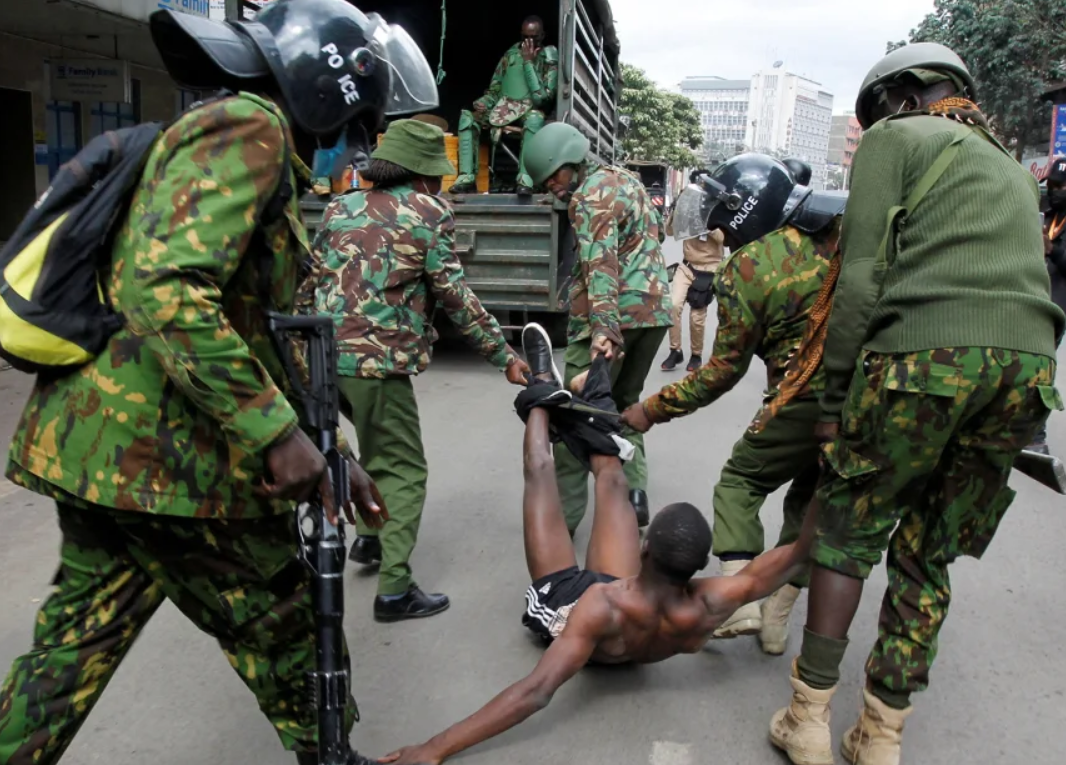Despite the president’s U-turn on the tax bill, protests in Kenya continue.
Protesters in Kenya continue to defy tear gas and a significant police presence as they go to the streets. Protests have broken out in Kenya following President William Ruto’s unexpected decision to pull support for a contentious budget bill, revealing the widespread dissatisfaction with the government’s handling of the issue.
How the “One Million People March” Comes to Pass
The “One Million People March” was the name given to Thursday’s new wave of demonstrations in Kenya. The president’s formal mansion and office, State House, was threatened with occupation by some demonstrators, while others demanded roadblocks leading to Nairobi, the capital city.
Protests persist despite President Ruto’s efforts to calm the situation by declaring his refusal to approve the budget bill. It would appear that the president failed to address the concerns of the demonstrators in his remarks on Wednesday, where he asserted that he had been “listening keenly” to the people of Kenya.

A Worsening of Situations and Sad Deaths
Kenyan society has been devastated by the ongoing protests. According to civil society organizations, conflicts involving the protests have resulted in the deaths of at least 23 persons. Anger and frustration felt by many Kenyans have only been heightened by this terrible loss of life.
A substantial police presence and roadblocks have been erected around routes leading to the State House as a response to the unrest by the security forces in Nairobi. Law enforcement’s deployment of tear gas to disperse protesters has only served to heighten tensions between the two groups.
A Trust Crisis Extending Past the Finance Bill
The protests have grown into something much bigger than the contentious finance bill that started them. According to Maria, a teenage activist from Nairobi, “It’s more than about the finance bill now.” A rising number of young Kenyans feel their government has failed them, and her statement echoes that attitude.
Beyond the withdrawal of the financial measure, the demonstrators’ demands have broadened. The fact that President Ruto did nothing to stop the deaths has led some to demand his resignation. While some are calling for the recall of politicians who voted in favor of the measure, others are demanding justice for the demonstrators who have died.
The regional police commander in Nairobi and the inspector general of police in Kenya have both been demanded to step down by civic organizations like the Law Society of Kenya. Allegations that police shot and killed protestors have prompted these requests.
Unrest Fueled by Economic Challenges
The faltering Kenyan economy is central to the demonstrations. Living expenses, food prices, and debt have all been on the rise in Kenya, the economic superpower of East Africa. Much of the country’s income goes toward paying off its massive debts, which amount to billions of dollars, accrued to both international and domestic creditors.
In defense of his economic policies, President Ruto declared, “I am not going to preside over a bankrupt country, I am not going to preside over a country that is in debt distress.” His position, however, has not helped the average Kenyan who is struggling to make ends meet.
Regarding Kenya’s “significant shortfall” in tax revenue collection, the International Monetary Fund (IMF) has voiced its concerns. The group has asked the government to think about ways to raise revenue and cut down on borrowing.

Consequences of Removing the Bill on Finance
The financial bill’s withdrawal may calm some demonstrators, but it may cause fresh problems for Kenya’s economy. Putting the bill aside “will create a revenue shortfall” in Kenya’s budget, according to Moody’s, an international financial ratings organization. Without the planned tax changes, the government may have to decrease spending in many areas, as President Ruto warned.
What Lies Ahead: Repairing Damage and Discovering Answers
It is becoming increasingly apparent that President Ruto is confronting the greatest challenge of his leadership career as the protests drag on. University of Nairobi professor Herman Manyora argues that rolling back policies won’t necessarily fix the government’s image. He is in favor of more radical changes, such as a possible shakeup in the president’s economic advisory committee and a shakeup in the cabinet.
“They feel betrayed,” Manyora says, emphasizing the significance of connecting with Kenya’s youth. That is the root cause of the riot. President Ruto, who gained power with the help of the country’s youth, has said that he would like to hear their thoughts on how to fix the economy. The process of reestablishing confidence and identifying areas of agreement, however, is likely to be lengthy and difficult.
The Way Ahead for Kenya
As Kenya deals with this era of instability, the world is watching to see how the country handles these difficult times. The continuing demonstrations are a sobering reminder of how precarious the equilibrium is between social stability and economic reform.
If Kenya is serious about making progress, its government must resolve the finance bill’s urgent problems while also tackling more systemic ones like economic inequality, underrepresentation in politics, and social justice. If Kenya wants to come out of this crisis stronger and more united, its leaders must prioritize open debate, transparent governance, and meeting the needs of all Kenyans.
All eyes are on Kenya as events unfold, hoping for a peaceful settlement that would lead to long-term economic prosperity and social stability.



















